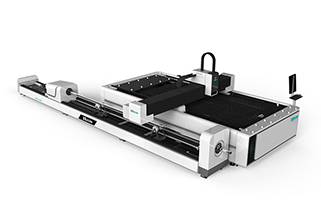
The laser cutting machine focuses the laser light emitted from the laser into a laser beam with high power density through the optical path system. The laser beam is irradiated on the surface of the workpiece, so that the workpiece reaches the melting point or boiling point, and the high-pressure gas coaxial with the beam blows away the molten or vaporized metal. With the movement of the relative position of the beam and the workpiece, the material finally forms a slit, so as to achieve the purpose of cutting. It is widely used in various metal industries.
1.Vaporization cutting
In the process of laser gasification cutting, the temperature of the surface temperature of the material rises to the boiling point temperature so fast that it is sufficient to avoid melting caused by heat conduction, so part of the material vaporizes into steam and disappears, and some of the material is ejected from the bottom of the slit as auxiliary gas The stream blows away. Very high laser power is required in this case.
2.Melting and cutting
In laser melting and cutting, after the workpiece is partially melted, the molten material is ejected by the airflow. Because the transfer of material occurs only in its liquid state, this process is called laser melting cutting.
3. Oxidative melting cutting (laser flame cutting)
Melt cutting generally uses an inert gas. If it is replaced by oxygen or other active gases, the material is ignited by the laser beam, and a fierce chemical reaction with oxygen generates another heat source, which further heats the material. This is called oxidative melting cutting. .
4. Control fracture cutting.
For brittle materials that are easily damaged by heat, high-speed, controlled cutting by laser beam heating is called controlled fracture cutting. The main content of this cutting process is: the laser beam heats a small area of the brittle material, causing a large thermal gradient and severe mechanical deformation in the area, resulting in cracks in the material. As long as a balanced heating gradient is maintained, the laser beam can guide cracks in any desired direction.